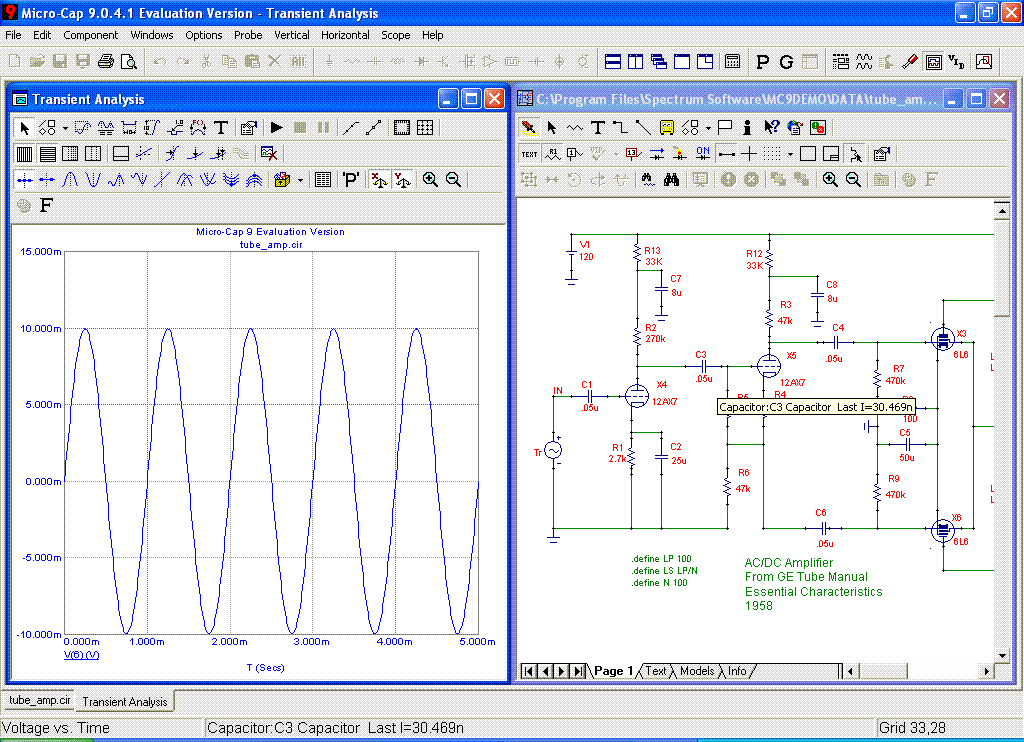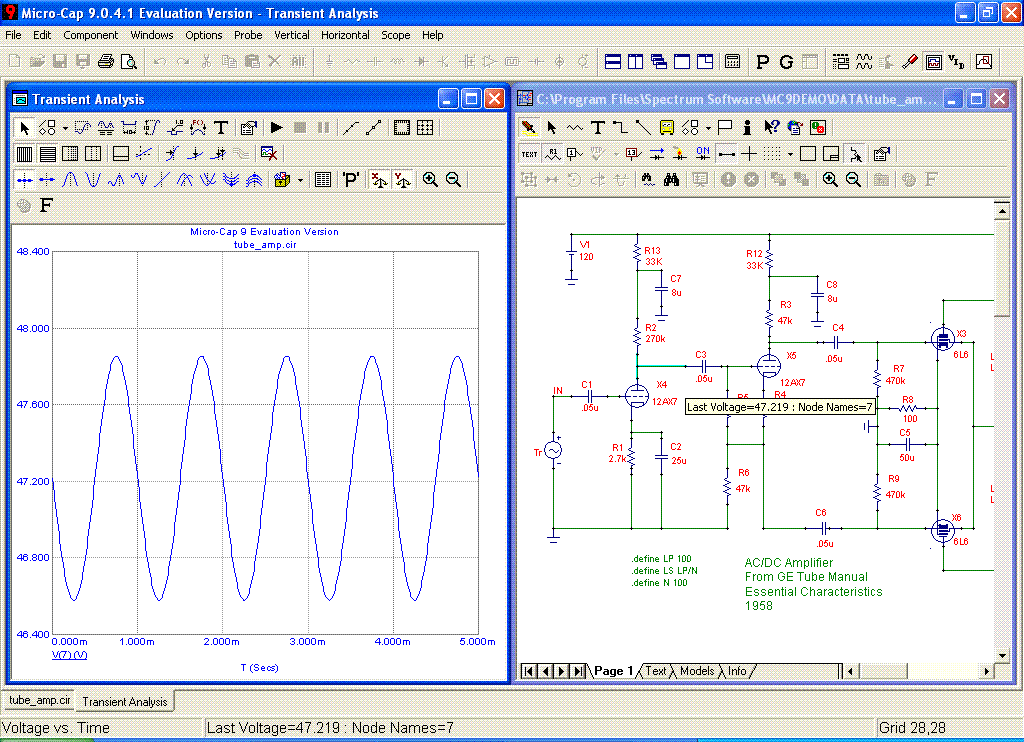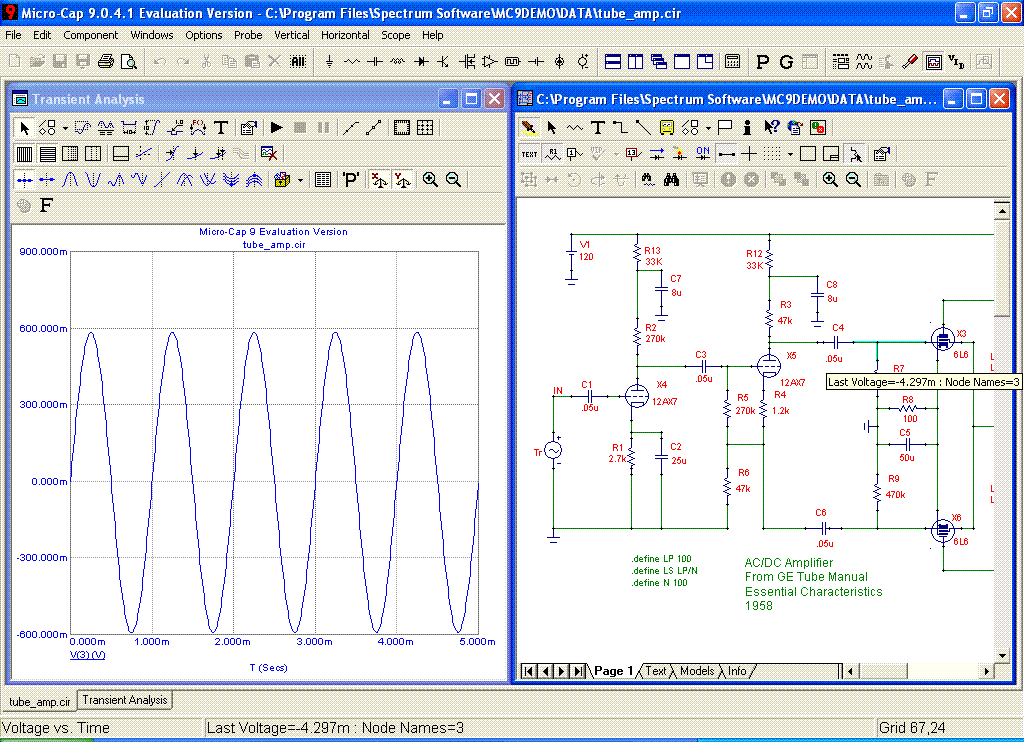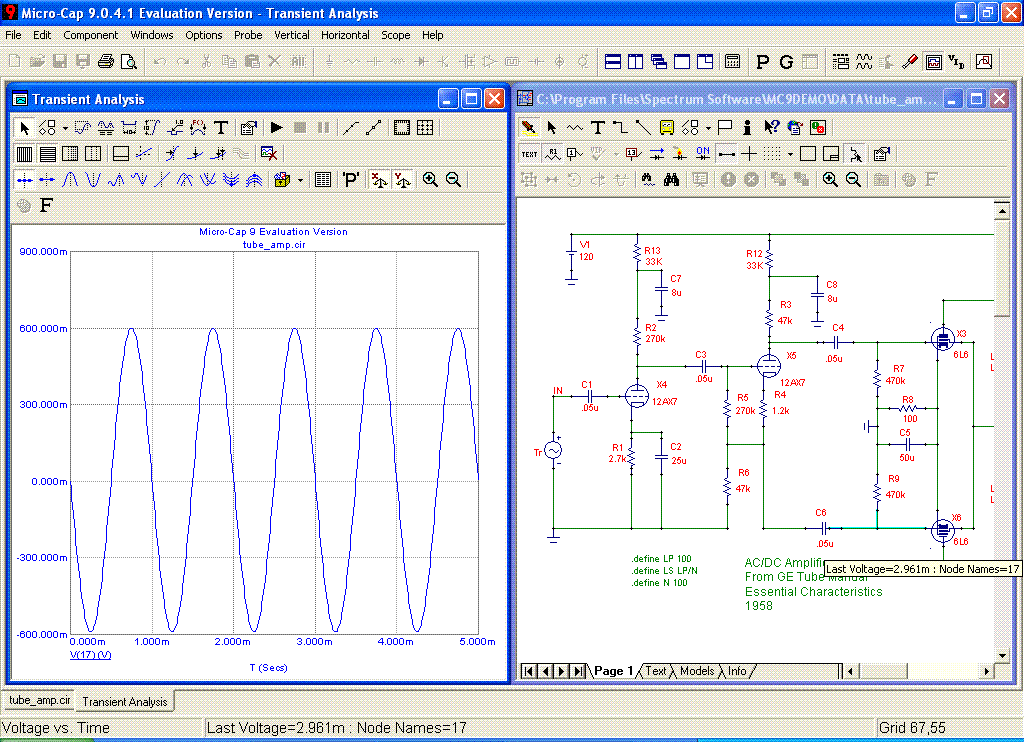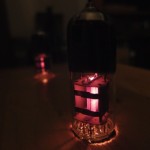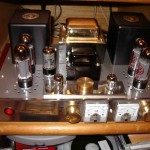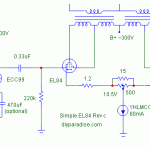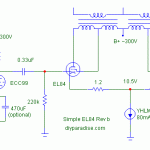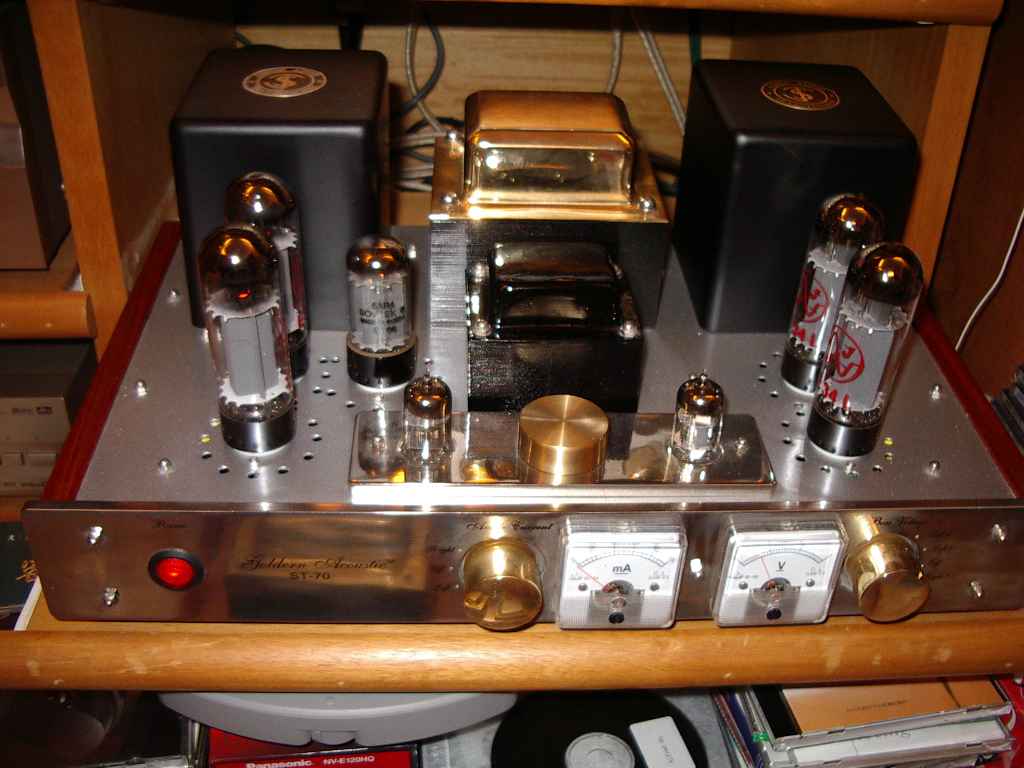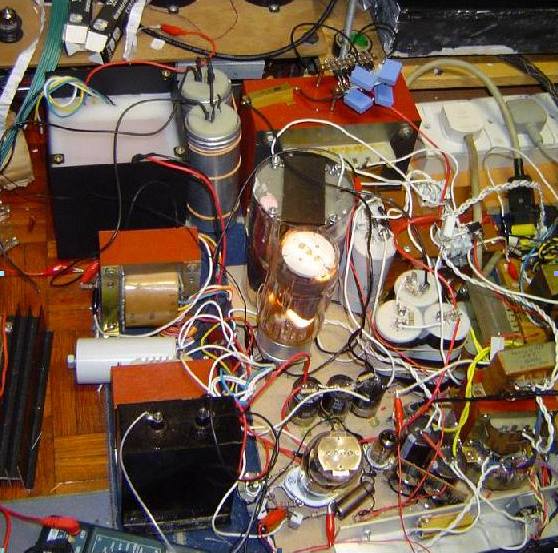Only recently I acquired a scope. Without a scope, you could still debug your diy circuits. Read on.
Oscilloscopes are great stuffs. However, not every diyer owns one, nor can afford a quality scope.
You may be surprised but it’s only recently that I got hold of a scope. Yeah, all this while, all the designing, all the debugging were all done without one.
{mosgoogle}
I’m going to show you how it’s done. In Bob Pease’s “Troubleshooting Analog Circuit Techniques”, if you could only learn one lesson from his book, let it be this : “when it comes to troubleshooting, most of the time, rely on your wits!”.
And a basic understanding of the workings of your circuit. To best illustrate this, let’s look at this sample circuit.
Yup, circuit taken from a 1958 GE Tube Manual. The manual actually shows 35C5 as output tubes but for simulation purpose, 6L6 was used. Also, tube stuffs are easier to understand. Now let’s look at what happens when we pump in a small signal at the input.
First thing first, let’s explain the subsequent pics. The circuit is shown on the right and the “steady state” (or running) signal is shown on the left. This wonderful software is called Micro-Cap circuit simulation software. I downloaded the evaluation version. You could use Linear Tech’s Switchercard too.
Now let’s apply 10mv at the input. On the circuit, that’s the furthest left end, labeled “Tr”. We apply a little input to see what does the amp do with it.
That was the input. At output of first 12AX7, we could see a much magnified signal just in front of C3. The 12AX7 plate sits at 47.2VDC. Hey, we fed in 10mVAC and now we have 700mVAC riding on 47.2VDC. Makes sense? So this 12AX7 gain stage has amplified the signal by 70x, which is plausible as 12AX7 has an amplification factor of 100x, so theoretically it could amplify up to 100x.
Now what happens at plate of second 12AX7? Or output of second stage? Just in front of C4?
A 600mVAC signal riding on 82.5VDC. So since we feed this stage 700mVAC, the signal has been attenuated? Well, this stage isn’t a gain stage you see, it’s actually phase splitting the signals so that the 2 output tubes each receive signals of opposite phase. This form of phase splitting is known as “a concertina phase splitter”.
It’s clearer if we look at signal at grid of both 6L6 tubes.
Note that there’s no more DC voltage there. That’s what the cap does! Note also the grid voltages are at opposite phase, meaning they are inverse of each other.
Okay, up to here, what’s the point of all this? It’s just to illustrate the workings of the amp. Now that you understand how the amp works and how the signal changes along the signal path, debugging will be easy.
Just get a test CD with a 1kHz test tone, or download a 1kHz test tone and burn it to your disc. Then repeat this track in your CD player.
This 1kHz tone will be like the function generator outputting the 10mVAC in the example above. Why 1kHz? Well, because any El Cheapo multimeter could measure it! Besides, 1kHz is the de facto standard test frequency for audio gears.
Then with your multimeter set to VAC, you could now measure the voltages at each stage of your circuit.
So if input is 100mV (magnitude controlled by your volume control or preamp), after first stage, what would you be expecting to measure? See if you don’t understand your circuit, you can’t debug it. Even with a scope.
And so on. Yeah a scope is nice, but since tube circuits are so simple, if you hear distortion, either the tubes are at fault or the design is suspect. Or just a component failure. Easy to change and check.
With a scope, you could certainly do more, like if there is a phase splitter, the outputs you could see whether it’s in phase or not, but what if you only have a multimeter and want to check whether there’s phase splitting going on?
Red probe on one of the 6L6 grid, black probe on the other 6L6 grid. It should measure TWICE voltage on one grid. Look at the above waveforms again. The multimeter measure the difference between its 2 probes.
Bob Pease is right. Rely on your wits!

